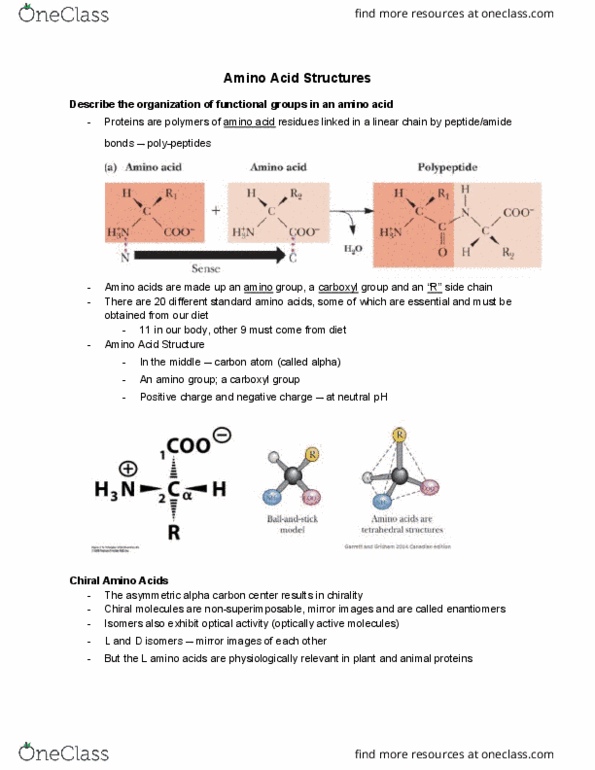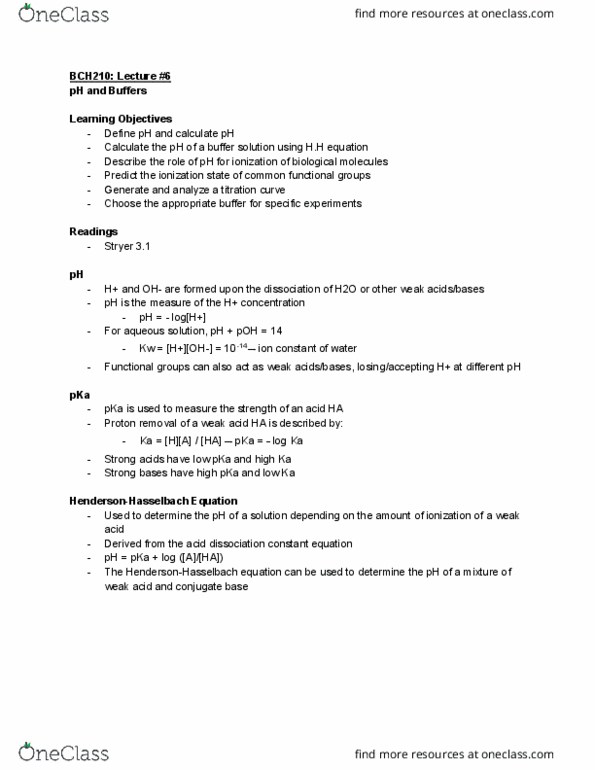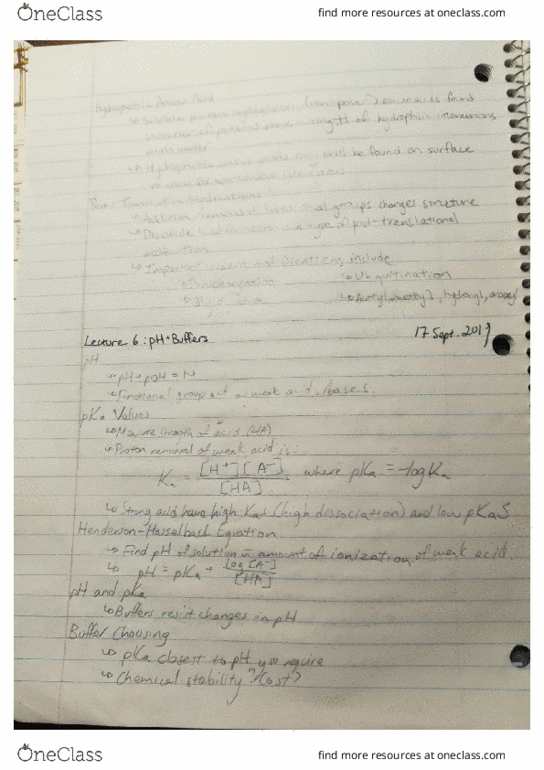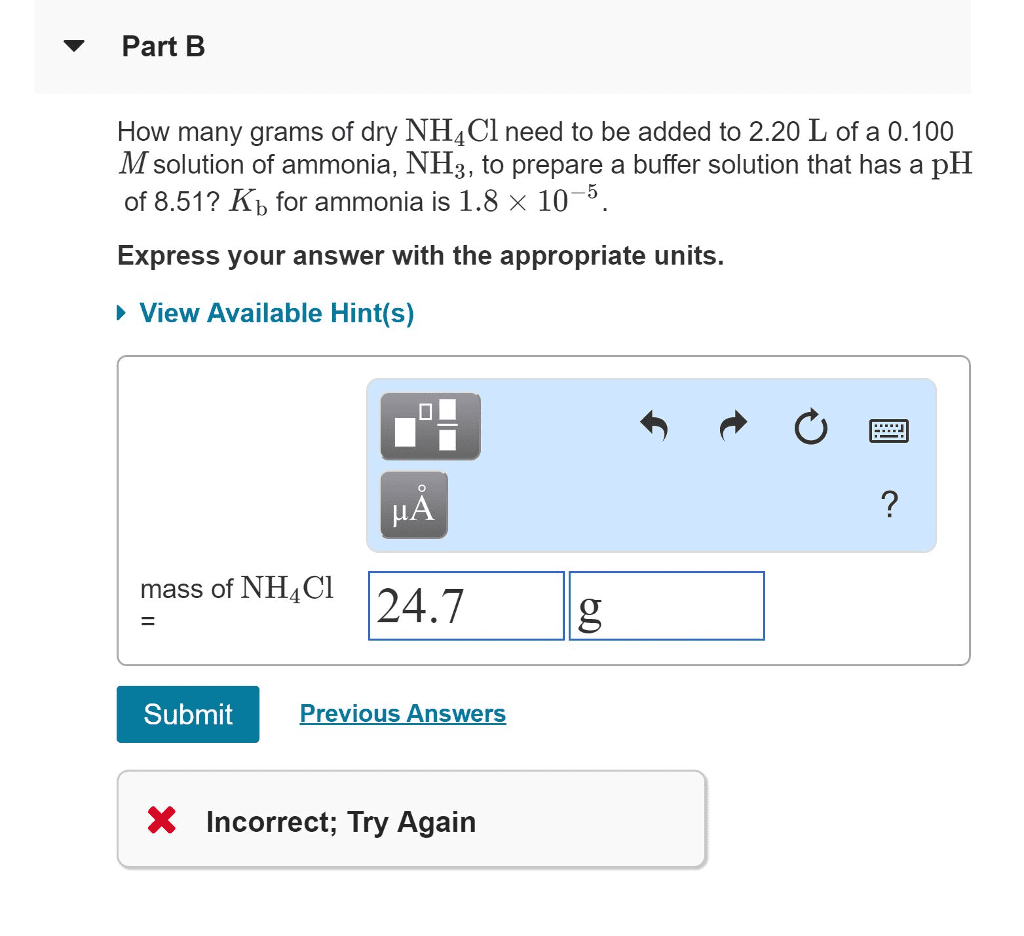BCH210H1 Lecture Notes - Lecture 6: Titration Curve, Buffer Solution, Acid Dissociation Constant
BCH210H1 verified notes
6/39View all
Document Summary
Calculate the ph of a buffer solution using h. h equation. Describe the role of ph for ionization of biological molecules. Predict the ionization state of common functional groups. Choose the appropriate buffer for specific experiments. H+ and oh- are formed upon the dissociation of h2o or other weak acids/bases. Ph is the measure of the h+ concentration. For aqueous solution, ph + poh = 14. Kw = [h+][oh-] = 10-14 ion constant of water. Functional groups can also act as weak acids/bases, losing/accepting h+ at different ph pka. Pka is used to measure the strength of an acid ha. Proton removal of a weak acid ha is described by: Ka = [h][a] / [ha] pka = - log ka. Strong acids have low pka and high ka. Strong bases have high pka and low ka. Used to determine the ph of a solution depending on the amount of ionization of a weak acid. Derived from the acid dissociation constant equation.







